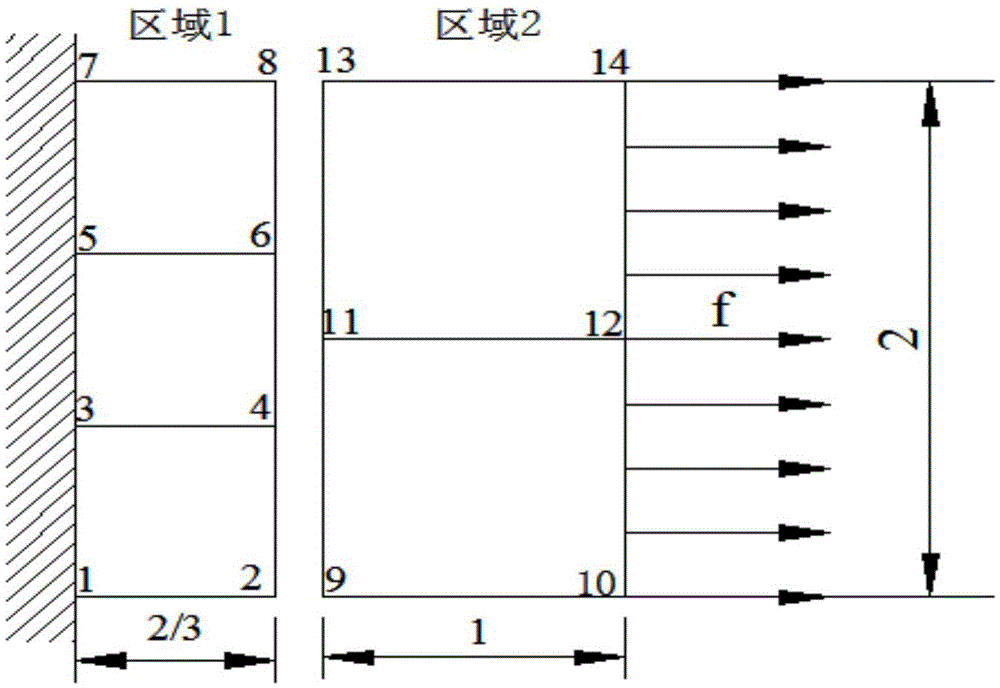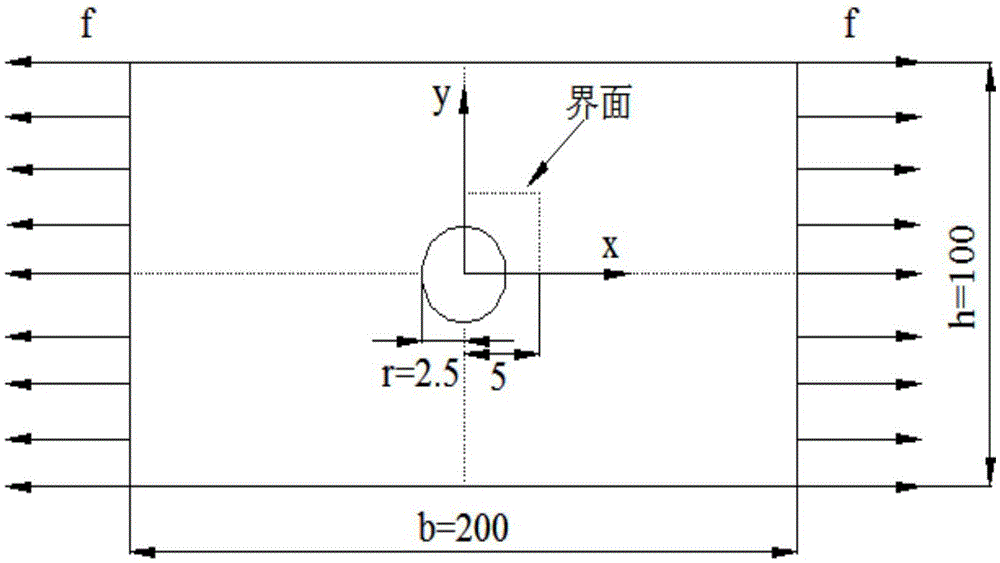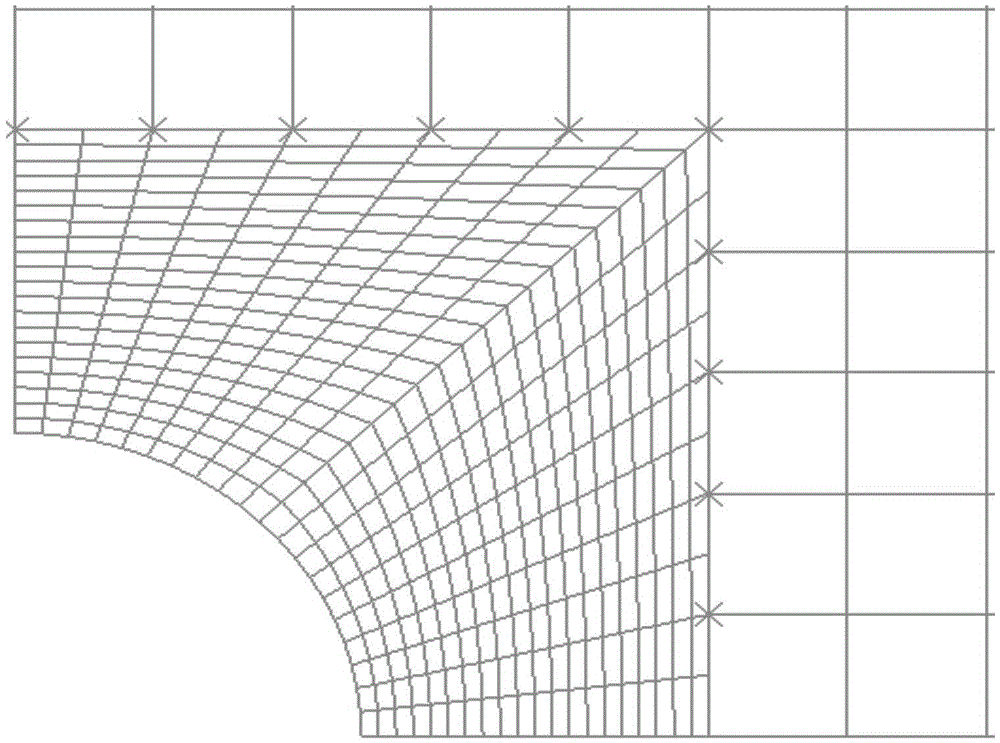Self-adaptive two-dimensional finite element sparse and dense grid interface transition method
A finite element, self-adaptive technology, applied in special data processing applications, instruments, electrical digital data processing, etc., can solve the problems of inconvenient calculation, singular stiffness matrix, and no published invention patents.
- Summary
- Abstract
- Description
- Claims
- Application Information
AI Technical Summary
Problems solved by technology
Method used
Image
Examples
Embodiment
[0106] as attached figure 2 The two ends of the slab with the geometric dimensions shown are subjected to a uniform tensile load f, and the length and width of the slab are respectively:
[0107] b=200, h=100, the radius of the hole r=2.5; the distance from the interface to the center of the circle is 5.
[0108] Using symmetry, only 1 / 4 of the plate is modeled; a finer mesh is used between the holes and the interface, and a sparser mesh is used for other parts. A conventional finite element model including nodes was established using finite element software (see the attached image 3 ) and models using the interface transition method without nodes (see attached Figure 4 ) for comparative analysis. The plane stress four-node quadrilateral element CSP4 is used for meshing. Each part of the interface applies 5 interface units.
[0109] The calculation results of the two methods are basically the same. Horizontal displacement U across the interface 1 (see attached Figu...
PUM
 Login to View More
Login to View More Abstract
Description
Claims
Application Information
 Login to View More
Login to View More - R&D
- Intellectual Property
- Life Sciences
- Materials
- Tech Scout
- Unparalleled Data Quality
- Higher Quality Content
- 60% Fewer Hallucinations
Browse by: Latest US Patents, China's latest patents, Technical Efficacy Thesaurus, Application Domain, Technology Topic, Popular Technical Reports.
© 2025 PatSnap. All rights reserved.Legal|Privacy policy|Modern Slavery Act Transparency Statement|Sitemap|About US| Contact US: help@patsnap.com



